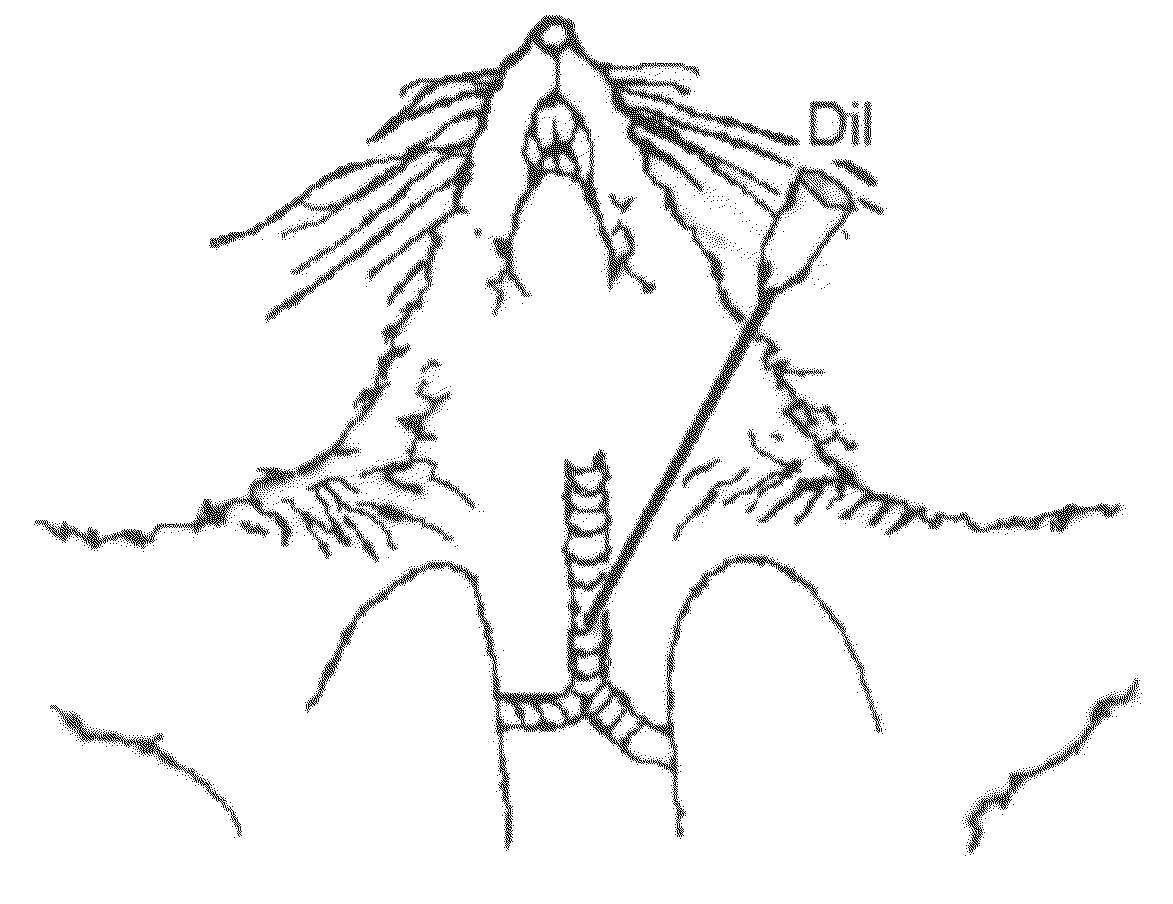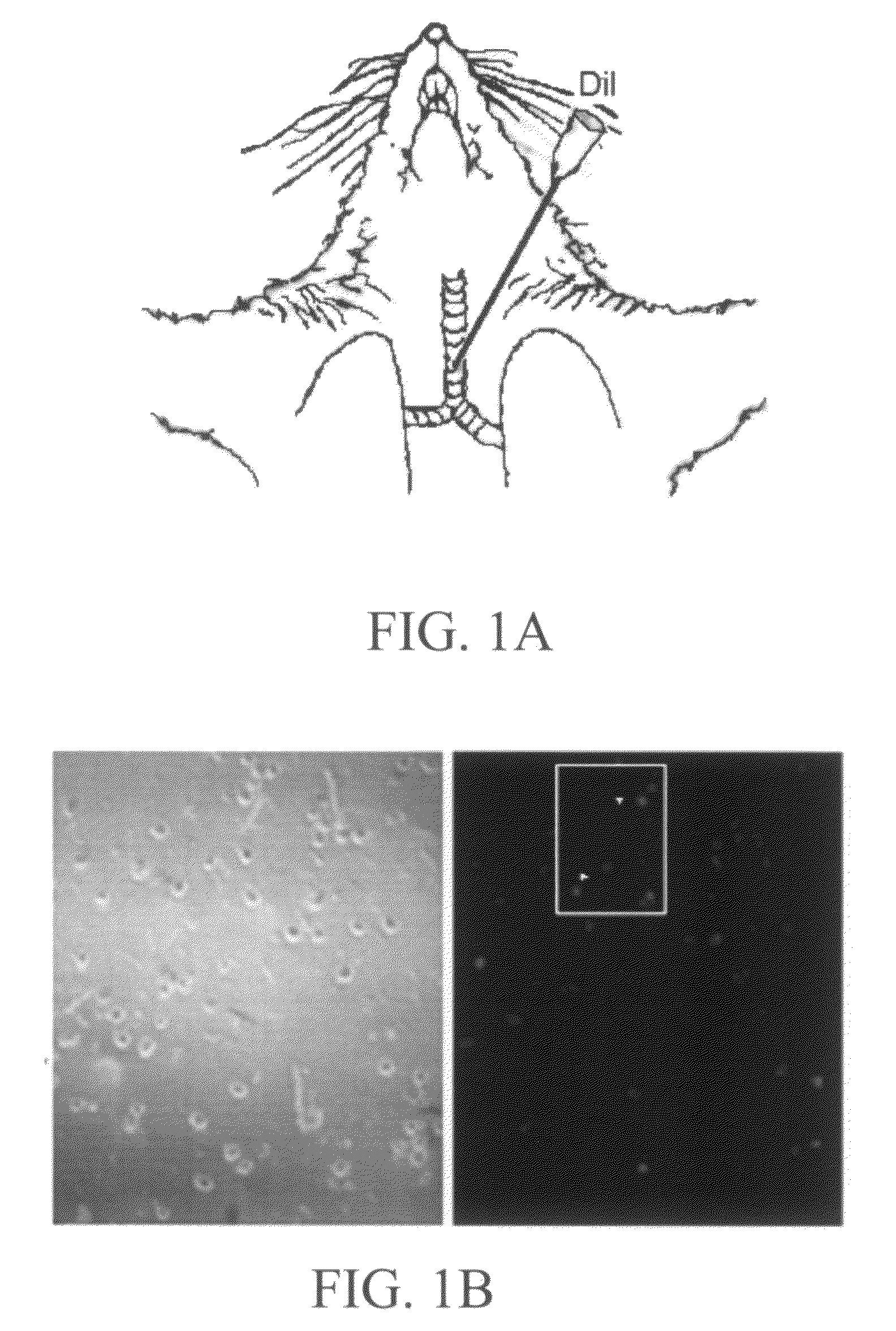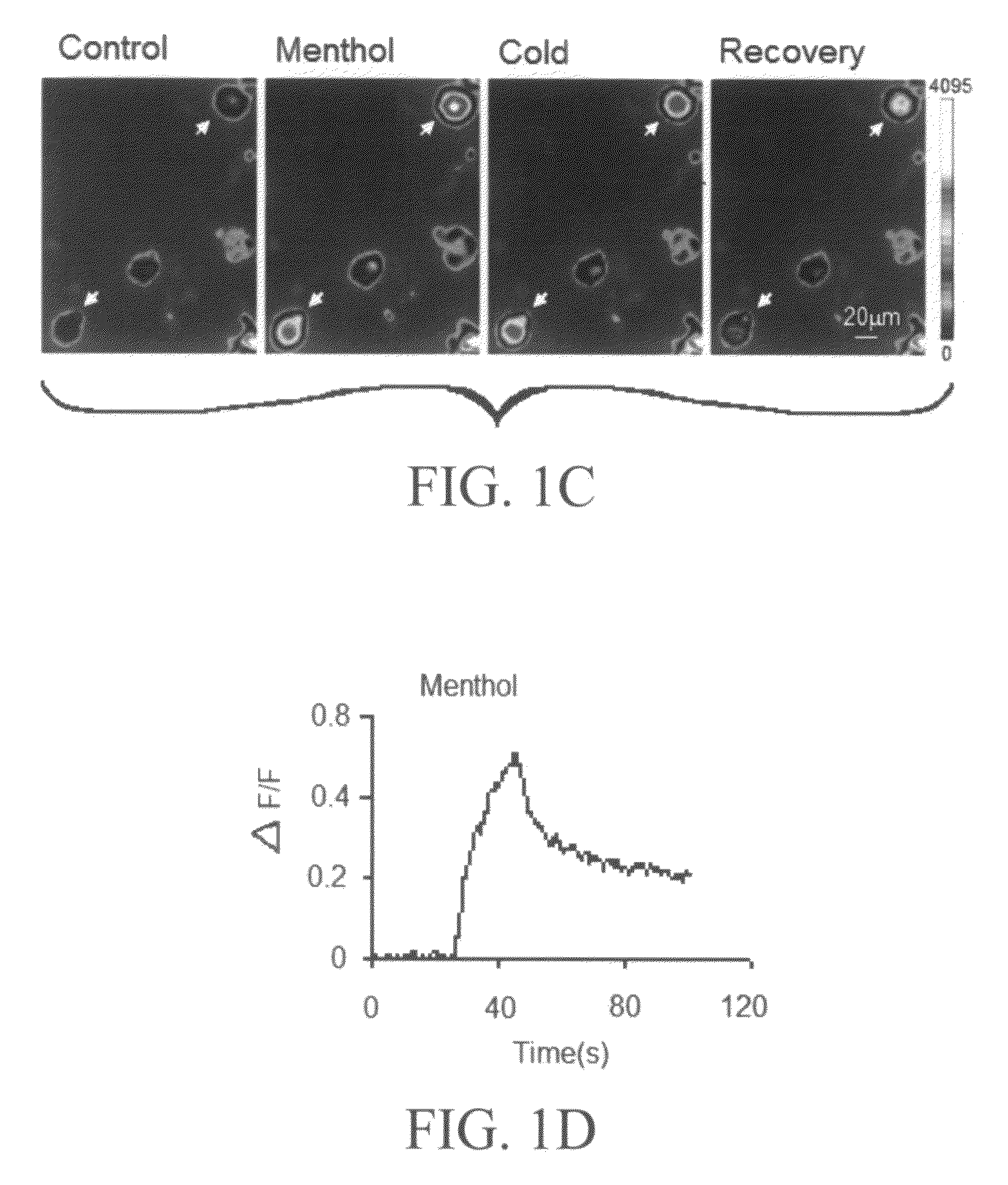Methods and Systems for Treating Asthma and Other Respiratory Diseases
a technology for applied in the field of methods and systems for treating asthma and other respiratory diseases, can solve the problems of asthma, greatly impaired quantity of air, and millions of people's stress and misery, and achieve the effect of better understanding
- Summary
- Abstract
- Description
- Claims
- Application Information
AI Technical Summary
Benefits of technology
Problems solved by technology
Method used
Image
Examples
example i
Characteristic of TRPM8 Receptor Activity in Vagus Nervous System
1. Tissue Collections
[0116]Tissues from any patient (i.e., primates, humans, domesticated animals) are used to study TRPM8 receptor activity in vagus nerves to assess vagus nerve reflex of the bronchopulmonary system. Preferably, human tissues are utilized. The skilled artisan would readily grasp those tissues useful in studying TRPM8 receptor activity, which can include bronchopulmonary tissues and the ganglions of the vagus nerves. The ganglions are used to determine whether the cell body of the vagus afferent fibers expresses TRPM8 receptors. The bronchopulmonary tissues are used to determine whether the afferent nerve endings that innervate bronchopulmonary tissues express TRPM8 receptors.
[0117]Human bronchopulmanary tissues can be obtained from any known resource including, for example, the Molecular Tissue Bank (MTB) at the University of Florida and the Pulmonary Clinic at the Shands Hospital of the University of...
example 2
Functional Screening of TRPM8 Receptor Activity
[0142]In a patient, the vagus nerve afferent fibers that innervate bronchopulmonary tissues are retrogradely labeled using DiI, as described above in Example 1. Seven days following this nerve tracing procedure, the vagus nerve ganglions are harvested and the ganglion neurons are acutely dissociated. The dissociated neurons are plated in the dishes and used for high-throughput calcium-imaging and patch-clamp recording experiments within 6 hours. Dissociate neuron preparation may be utilized to ensure healthy neurons that are suitable for in vitro functional study.
[0143]To determine cold response by calcium-imaging technique, neurons will be first loaded with the Ca2+ indicator Fluo-3. This is done by incubating neurons with 5 μM Fluo-3-AM in 20% pluronic acid (Molecular Probes, Eugene, Oreg.) for 30 min at 35° C. After dye loading, the cells are perfused with normal bath solution in a 0.5 ml chamber on a microscope stage (Olympus IX70)....
example 3
TRPM8 Receptor Activity in Relation to Substance P
[0145]The nociceptive mediator substance P (SP) that is present in somatic sensory afferent fibers has been found in the vagus afferent fibers. SP released from the vagus afferent fibers are involved in inflammatory reaction in bronchopulmonary tissues under a number of respiratory pathological conditions including asthma. Because SP plays a pathological role in bronchopulmonary inflammation and asthma, it is beneficial to detect SP release from autonomic sensory neurons (as opposed to previously disclosed somatosensory neurons). Further, by analyzing of the relationship between TRPM8 receptor activity and SP release, the subject invention provides important information regarding the pathology of asthma and other respiratory diseases for use in screening methods and / or compositions useful in the diagnosis or treatment of respiratory diseases.
[0146]To determine whether TRPM8-expressing vagus nerves are neuropeptidergic afferent fibers...
PUM
 Login to View More
Login to View More Abstract
Description
Claims
Application Information
 Login to View More
Login to View More - R&D
- Intellectual Property
- Life Sciences
- Materials
- Tech Scout
- Unparalleled Data Quality
- Higher Quality Content
- 60% Fewer Hallucinations
Browse by: Latest US Patents, China's latest patents, Technical Efficacy Thesaurus, Application Domain, Technology Topic, Popular Technical Reports.
© 2025 PatSnap. All rights reserved.Legal|Privacy policy|Modern Slavery Act Transparency Statement|Sitemap|About US| Contact US: help@patsnap.com



